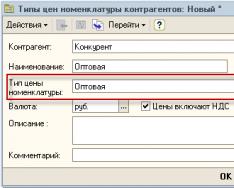
Mammals Body parts head neck torso limbs tail The body is covered with hair, the cubs are fed milk. Groups of mammals by type of diet: carnivores, insectivores, herbivores, omnivores. Representatives: whale, wolf, elephant, mouse, hedgehog, mole, dolphin, walrus, horse, porcupine, wild boar, hare...


Birds Body parts torso head wings beak lower limbs neck The body is covered with feathers and has wings. They lay eggs and hatch chicks. By feeding method: granivores, insectivores, carnivores, omnivores. Representatives: cuckoo, eagle, bustard, ostrich, owl, heron, stork, peacock, pheasant, black grouse, owl, eagle owl, parrot, duck...


Body parts abdomen head wings chest 6 legs (three pairs) Insects are animals that have 6 legs. They lay eggs from which larvae develop. Insect food is varied: plants, insects, animal remains, pollen, nectar, juice, etc. Representatives: dragonflies, butterflies, beetles, bedbugs, ants, wasps, cockroaches, grasshoppers, lice, flies, mosquitoes, bees. Insects


Amphibians Body parts head front legs torso hind legs Amphibians are animals with bare, slimy skin. They breathe with their lungs and skin. In the spring they lay eggs from which tadpoles develop. They feed on worms, leeches, snails, and insects. Representatives: frogs, toads, newts.


Body parts head tail torso fins Fish are animals whose body is covered with scales. They move with the help of fins. They breathe with gills. For reproduction, eggs are laid, from which fry develop. By type of diet: herbivorous and carnivorous. Representatives: pike, cod, flounder, shark, perch, carp, bream, pike perch, salmon, mullet, etc. Fish


Reptiles Parts of the body fore and hind limbs head neck torso tail The body is covered with dry scales or shell. They live on land and in water, but lay eggs on land. They feed on plants, fish, birds and their eggs, insects, worms, etc. Representatives: turtles, lizards, snakes, crocodiles, snakes, vipers.


Who heals trees in the forest without sparing their heads? His job is hard - he hammers trunks all day long. Riddles about animals The trumpet sounds bassy, Don't touch the soloist, Let him sit on a flower And drink sweet juice during intermission. Bigger than a frog, Bug-eyed girlfriend. And, of course, Replaces all words with the word “kva”. He lives on lace, He terrifies flies, And although he is not an octopus, He has eight legs. It lurks under the water, flies to food like a bird! Click with teeth - Underwater wolf. An evil green steamer lives in the rivers of Africa! Whoever swims towards him will swallow everyone... The owner of the forest wakes up in the spring, And in winter, to the howl of a blizzard, Sleeps in a snowy hut.



Slide 2
A huge number of different animals live on our planet. Some live on land, others in water. In ancient times, people constantly dealt with wild animals. To protect himself, man studied their habits and managed to tame some of them. This is how pets appeared.

Slide 3
Mammals
The most beautiful animals existing on earth. They have adapted to live everywhere - in water, on land, underground, in the air. Mammals are special in that they give birth to live young, rather than laying eggs or eggs. Animals of this species are warm-blooded, their body temperature does not depend on the ambient temperature.

Slide 4
The most important orders of mammals
Insectivores (mole, shrew) Chiroptera (mergans, bats) Rodents (squirrel, beaver, gopher) Lagomorphs (hare, rabbit) Predators (wolf, bear, tiger) Pinnipeds (walrus, seal) Cetaceans (blue whale, sperm whale, dolphin) Artiodactyls (cow, elk, wild boar, hippopotamus) Primates (macaques, monkeys) Artiodactyls (horse, donkey, zebra)

Slide 5
One of the distinctive features of squirrels is their ability to store nuts for the winter.

Slide 6
The largest mammals are whales. One of the smallest shrew animals from the order of insectivores
The whale reaches 33 meters in length and weighs 150 tons.
The shrew has a body length of 4-6 cm.

Slide 7
A strange animal is the platypus.

Slide 8
Elk is the largest modern deer

Slide 9
Animals with a pocket
Marsupials include kangaroos, possums, koalas and others. They carry their young in a pouch on their stomach. Most of them live in Australia.

Slide 10

Slide 11
Wild cats Cheetah Lion

Slide 12
The longest animal is the giraffe
Its long neck makes it the tallest of modern mammals: the height from hooves to horns can reach almost 6 meters.

Slide 13
Rhinoceroses are solitary in their way of life, each animal adheres to its own territory
For all its power and thickness of skin, this beast is vulnerable - it is completely myopic.

Slide 14
Living in the ice
White coloring allows the bear to remain invisible against the background of snow and ice while hunting

Slide 15
Seals are excellent catchers and divers. They live in large communities.
Newborn seals are covered with special fat, which retains their body heat very well.

Slide 16
There are many varieties of worms living on earth. Earthworms or earthworms (lat. Lumbricina) are a suborder of oligochaete worms. They live on all continents except Antarctica

Slide 17
SHELLFISH
Mollusks are widespread, invertebrate animals. Their body is soft, in most it is divided into a head, torso and leg. The main characteristics of mollusks are the presence in most species of a calcareous shell and mantle - a fold of skin covering the internal organs.

Slide 18
ECHINODERMS
Echinoderms are marine animals with five-ray body symmetry. About 6,000 species of various echinoderms are known. Like all echinoderms, starfish live in the sea. They cannot live in the Baltic, Caspian and Black seas, where the salinity of the water is low. Starfish crawl along the bottom close to the shore and during low tide they often remain under rocks and algae.

Slide 19
CRUSTACEANS
Includes more than 30 thousand species, united in 20 orders: decapods (lobsters, hermit crabs, crabs, crayfish), phyllopods (daphnia), copepods (Cyclops), isopods (woodlice), etc. Most crustaceans move freely along the bottom or in the water column, few live on land. Their sizes range from fractions of millimeters to tens of centimeters.

Slide 20
Arachnids
The class includes land animals, with the exception of some groups that secondarily switched to living in water. Representatives of the class are spiders, harvestmen, scorpions, ticks, etc. Arachnids are mainly predatory animals.

Slide 21
INSECTS
Of all the animal organisms inhabiting our Earth, insects make up 70%. It is difficult to find a place where one could not meet representatives of this huge class. The most powerful insect is the scarab beetle. The smallest insect is the pinnate beetle.

Slide 22
Resources used:
My first encyclopedia", E.S. Chaika, Minsk, Harvest, 2011; Internet resources: wikipedia.org; illustrations: http://animals.3dn.ru/news/koala/2012-02-27-211 http://animals.3dn.ru/_nw/0/97513906.jpg http://animals.3dn.ru/ _nw/2/12107478.jpg http://animals.3dn.ru/_nw/2/91006179.jpg http://animals.3dn.ru/_nw/1/21739459.jpg http://animals.3dn.ru /_nw/1/82856280.jpg http://animals.3dn.ru/_nw/1/46391864.jpg http://animals.3dn.ru/_nw/1/87390089.jpg http://animals.3dn. ru/_nw/0/58919521.jpg http://animals.3dn.ru/_nw/0/16081205.jpg http://animals.3dn.ru/_nw/0/17349120.jpg http://animals.3dn .ru/photo/1-0-20-3

Slide 23
http://dic.academic.ru/pictures/wiki/files/80/Plectaster_decanus.jpg http://www.photosight.ru/photos/5027282/ http://zooclub.ru/fotogal/119472.shtml
http://www.krugosvet.ru/enc/nauka_i_tehnika/biologiya/PAUKI.html http://www.pressfoto.ru/image-1553663 http://raax.ru/wp-content/uploads/2010/02/ %D0%9F%D0%B0%D1%83%D0%BA.jpg http://raax.ru/wp-content/uploads/2010/02/%D0%9F%D0%B0%D1%83%D0 %BA.jpg http://900igr.net/fotografii/biologija/Tip-Kolchatye-chervi/003-Tip-kolchatye-chervi.html
The world
Diversity
animals
Teacher: Kuregova S.N.

- Let's find out what the science of animals is called
- Let's study what groups the animal kingdom is divided into
- Let's get acquainted with the characteristic features of each group and their representatives

ZOOLOGY – the science of animals
Scientists zoologists divide the animal kingdom into a large number of groups:
- Worms
- Shellfish
- Echinoderms
- Crustaceans
- Arachnids
- Insects
- Fish
- Amphibians
- Reptiles
- Birds
- Mammals

DESCRIPTION:
The body is divided into small segments. Each segment has short bristles necessary for locomotion.
REPRESENTATIVES:
* earthworm
*leech
*peskin
*tubifex

SHELLFISH
DESCRIPTION:
The body is soft, in many it is protected by a shell.
REPRESENTATIVES:
* snail
*octopus
*slug
*squid

ECHINODERMS
DESCRIPTION:
These are marine animals that lead a sedentary lifestyle. They have an original body shape resembling a star, flower, ball, cucumber, etc.
REPRESENTATIVES:
* Starfish
*sea urchin
*sea lily
*sea cucumber

CRUSTACEANS
DESCRIPTION:
The body consists of segments, each of which has a pair of limbs. The forelimbs are claws.
REPRESENTATIVES:
* cancer
*crab
*shrimp
*lobster

Arachnids
DESCRIPTION:
All animals in this group have eight legs
(four pairs)
REPRESENTATIVES:
* scorpion
*spider
*haymaker
*mite

PHYSMINUTE
Let's breathe in fresh air -
Let's all go for mushrooms:
One after another along the path,
And we have baskets in our hands.
There's a swamp ahead
How can we get through it?
Let's stand on our toes,
Let's jump onto the hummock.
In a clearing by the river
We saw mushrooms.
Let's put them in a basket
And let's go back!

INSECTS
DESCRIPTION:
Animals with six legs (three pairs)
REPRESENTATIVES:
* bug
*butterfly
*fly
*bee

DESCRIPTION:
Aquatic animals whose body is covered with scales. They move with the help of fins. They breathe using gills.
REPRESENTATIVES:
* perch
*pike

Amphibians (AMPHIBIANS)
DESCRIPTION:
The skin is bare and tender. They spend part of their life on land, and part in water.
REPRESENTATIVES:
* frog
*triton
*toad
*frog

REPTILES (REPTILES)
DESCRIPTION:
The body is covered with dry scales, and some also have a shell. All their lives these animals crawl and reptile.
REPRESENTATIVES:
* turtle
*snake
*crocodile
*lizard

DESCRIPTION:
The body is covered with feathers.
REPRESENTATIVES:
* crossbill
*eagle
*crow
*jay

MAMMALS (ANIMALS)
DESCRIPTION:
The body is covered with fur.
They feed their young with milk
REPRESENTATIVES:
* fox
*zebra
*tiger
*bear

- What is the science of animals called?
- What groups have zoologists divided the animal kingdom into?
- Name the characteristic features of fish.
- Name the representatives of mammals.
- What group do butterflies, beetles and dragonflies belong to? Name other representatives of this group.
- Representatives of which group have bare, soft skin. They spend part of their life on land, and part in water.
- Which group has four pairs of legs?

- What topic did you study in class today?
- What new things have you learned about the animal kingdom?
- What did you find most interesting?
- What else would you like to know about this topic?

END OF THE LESSON
Accounting

